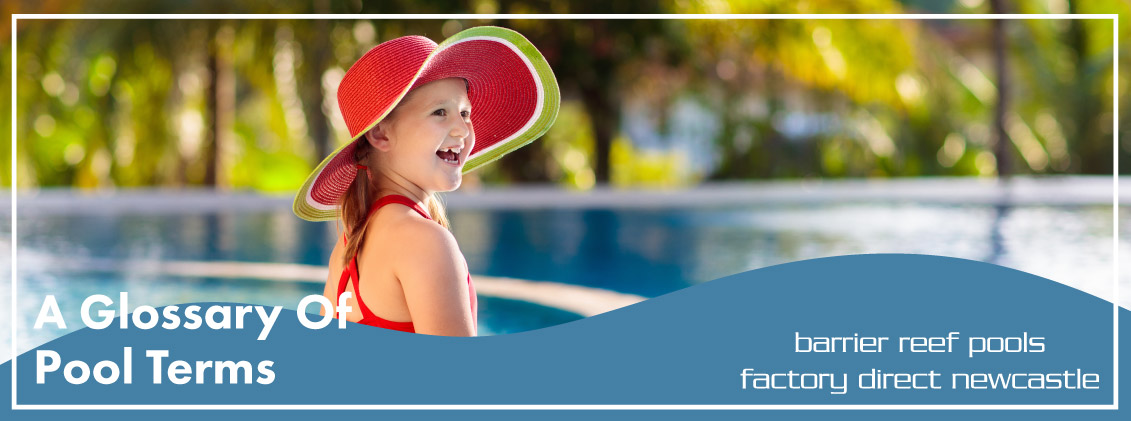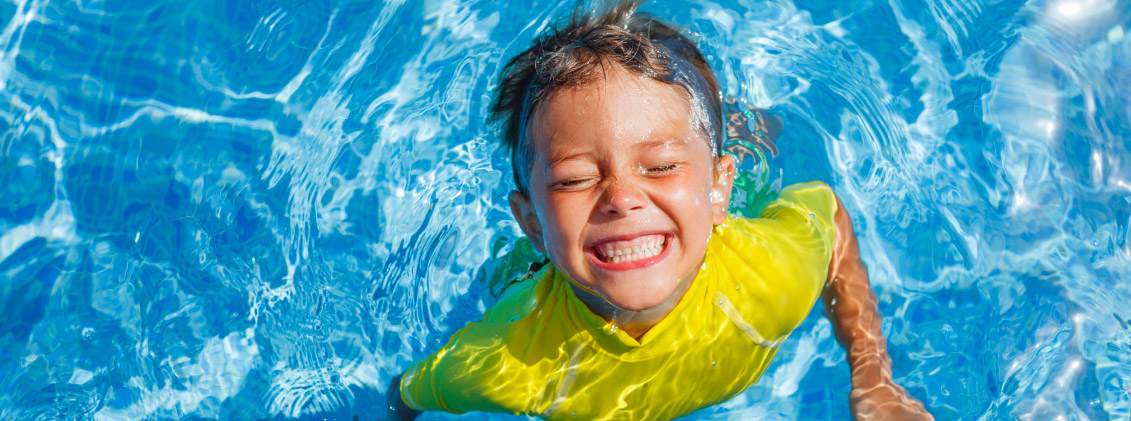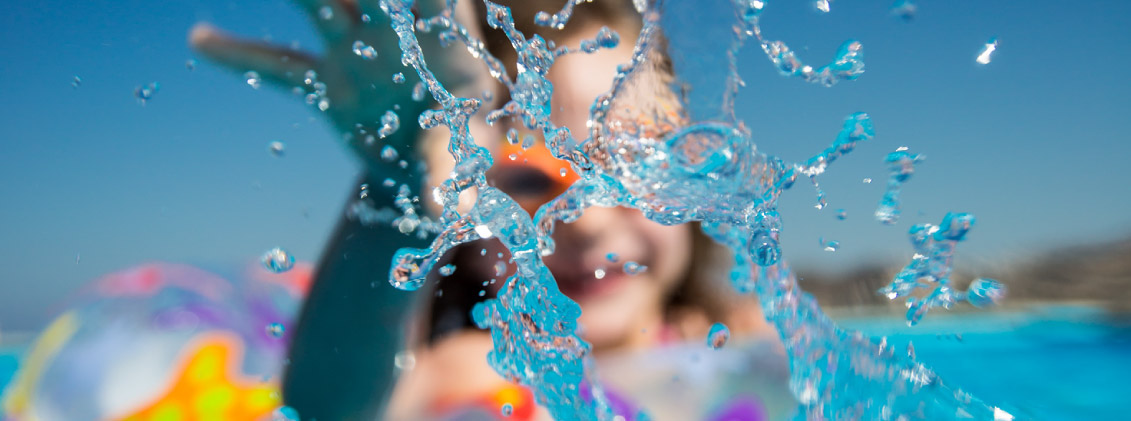A Glossary Of Pool Terms
Swimming pools can sometimes feel like a vast and intricate world, particularly when you encounter a flood of unfamiliar terms and phrases. Whether it's terms like "backstroke" or "butterfly stroke," or phrases like "freestyle technique" and "diving board etiquette," the pool world can be quite overwhelming. However, fear not! This glossary is here to "clear the waters" and provide you with a valuable resource to navigate through the intricacies of the pool world with confidence and ease. With simplified explanations and insights, you'll soon become well-versed in the language of swimming pools and be able to dive into this aquatic realm with newfound expertise.

What Are The Different Terms?
Algae
Algae are tiny, single-celled organisms that have the potential to invade and take over your pool, resulting in an unpleasant green, yellow, or even black discolouration. These pesky organisms can find their way into your pool through various means, such as being carried by the wind, transported by rainwater, or even introduced through contaminated swimwear. It’s important to stay vigilant and take necessary measures to prevent and control algae growth to ensure a clean and inviting pool environment.
Backwash
In pool maintenance, backwash refers to reversing the flow of water through your filter to clean it out. It’s an essential part of pool upkeep.
Chlorine
Chlorine, a highly effective chemical, is commonly employed to sanitise pool water, effectively eliminating harmful bacteria and stubborn algae. This versatile chemical is available in various forms, including granules, tablets, liquid, and gas, providing pool owners with flexible options to maintain a clean and safe swimming environment.
D.E. (Diatomaceous Earth) Filter
A D.E. (Diatomaceous Earth) filter is a highly effective filtration system that utilises diatomaceous earth, a naturally occurring substance, to capture and filter debris, as well as microscopic particles and microbes, from the pool water. This innovative method ensures a cleaner and healthier pool environment for all to enjoy.
Filter Cycle
This is the process and time it takes for the pool water to circulate through the filtration system and then back into the pool.
Hot Tub
Also known as a spa, a hot tub is a smaller pool specifically designed for heating water to provide a serene and therapeutic experience. With strategically placed jets, it creates a soothing environment that helps to relax muscles, relieve stress, and promote overall well-being. Whether it’s for unwinding after a long day or enjoying a social gathering with friends, a hot tub offers a perfect retreat to rejuvenate both body and mind.

Inlet
The inlet, also known as the return inlet, is an integral part of a swimming pool system. It is responsible for allowing water to flow back into the pool after it has been filtered and treated. By directing the water in a controlled manner, the inlet ensures proper circulation and distribution of the treated water throughout the pool, maintaining its cleanliness and hygiene.
Main Drain
Located at the deepest part of the pool, the main drain aids in water circulation, pulling water to the pump for filtration.
Niche
In pool design, a niche refers to a specifically designed recess or hollow space within the pool structure. These niches are strategically placed and often utilised for the purpose of housing and positioning pool lights, providing both functionality and aesthetic appeal to the pool area.
Overflow System
An overflow system, a crucial component of pool design, prevents the pool from overflowing during heavy rainfall or excessive water usage by efficiently draining the excess water. By diverting the surplus water away from the pool, this system ensures the optimal water level is maintained, preserving the pool’s structural integrity and preventing potential damage.
pH Level
This refers to the measure of acidity or alkalinity of water, known as the pH level. Maintaining a proper balance of pH is not only essential but crucial for the overall health and well-being of your pool. By ensuring the right pH, you can prevent issues such as corrosion, scaling, and the growth of harmful bacteria, ultimately prolonging the lifespan of your pool and providing a safe and enjoyable swimming experience for all.
Return Line
The pipe, which carries the meticulously filtered and expertly treated water from the pump, seamlessly flows back into the crystal-clear pool, ensuring a refreshing and rejuvenating swimming experience for all.
Skimmer
A practical device, typically mounted along the side of the pool, designed to efficiently and effortlessly remove debris from the surface of the water. It effectively captures leaves, twigs, and other unwanted particles, ensuring a clean and inviting pool environment for all to enjoy.

Test Strips
These are used to test the water’s pH level, chlorine, and other chemical levels in your pool.
UV Sanitation
A method of pool sanitation using ultraviolet light to kill bacteria, viruses, and other pathogens.
Vacuum
A pool vacuum, also known as a pool cleaner, is a mechanical device specifically designed to effectively and efficiently clean the bottom and sides of a pool. It operates by utilising suction or pressure to remove debris, such as leaves, dirt, and other particles that have settled out of the water. By thoroughly cleaning the pool, it helps to maintain its cleanliness and hygiene, ensuring a pleasant swimming experience for all.
Waterline Tile
These are the tiles that line the top edge of the pool where the water reaches when the pool is filled to capacity. They are designed to withstand constant contact with water and pool chemicals.
Yard Drain
A yard drain is a common feature in pool landscapes, used to effectively manage runoff and prevent water logging in the area surrounding the pool.
Zinc Anode
A zinc anode is a device used in pools to prevent the corrosion of metal components. It works by sacrificing itself to corrosion, thereby protecting other metal parts of the pool system.
Conclusion
Having a solid grasp of these key terms will not only demystify the intricate processes, advanced features, and effective maintenance techniques behind swimming pools, but also enhance your overall pool ownership experience. At Newcastle Swimming Pools, our dedicated team is more than delighted to assist you with comprehensive information regarding the smooth installation of a top-quality fibreglass pool and the multitude of ways in which it can transform your outdoor space. Don’t hesitate to reach out to us today and let us guide you towards creating your dream pool!
A Glossary Of Pool Terms
Swimming pools can sometimes feel like a vast and intricate world, particularly when you encounter a flood of unfamiliar terms and phrases. Whether it's terms like "backstroke" or "butterfly stroke," or phrases like "freestyle technique" and "diving board etiquette," the pool world can be quite overwhelming. However, fear not! This glossary is here to "clear the waters" and provide you with a valuable resource to navigate through the intricacies of the pool world with confidence and ease. With simplified explanations and insights, you'll soon become well-versed in the language of swimming pools and be able to dive into this aquatic realm with newfound expertise.

What Are The Different Terms?
Algae
Algae are tiny, single-celled organisms that have the potential to invade and take over your pool, resulting in an unpleasant green, yellow, or even black discolouration. These pesky organisms can find their way into your pool through various means, such as being carried by the wind, transported by rainwater, or even introduced through contaminated swimwear. It’s important to stay vigilant and take necessary measures to prevent and control algae growth to ensure a clean and inviting pool environment.
Backwash
In pool maintenance, backwash refers to reversing the flow of water through your filter to clean it out. It’s an essential part of pool upkeep.
Chlorine
Chlorine, a highly effective chemical, is commonly employed to sanitise pool water, effectively eliminating harmful bacteria and stubborn algae. This versatile chemical is available in various forms, including granules, tablets, liquid, and gas, providing pool owners with flexible options to maintain a clean and safe swimming environment.
D.E. (Diatomaceous Earth) Filter
A D.E. (Diatomaceous Earth) filter is a highly effective filtration system that utilises diatomaceous earth, a naturally occurring substance, to capture and filter debris, as well as microscopic particles and microbes, from the pool water. This innovative method ensures a cleaner and healthier pool environment for all to enjoy.
Filter Cycle
This is the process and time it takes for the pool water to circulate through the filtration system and then back into the pool.
Hot Tub
Also known as a spa, a hot tub is a smaller pool specifically designed for heating water to provide a serene and therapeutic experience. With strategically placed jets, it creates a soothing environment that helps to relax muscles, relieve stress, and promote overall well-being. Whether it’s for unwinding after a long day or enjoying a social gathering with friends, a hot tub offers a perfect retreat to rejuvenate both body and mind.

Inlet
The inlet, also known as the return inlet, is an integral part of a swimming pool system. It is responsible for allowing water to flow back into the pool after it has been filtered and treated. By directing the water in a controlled manner, the inlet ensures proper circulation and distribution of the treated water throughout the pool, maintaining its cleanliness and hygiene.
Main Drain
Located at the deepest part of the pool, the main drain aids in water circulation, pulling water to the pump for filtration.
Niche
In pool design, a niche refers to a specifically designed recess or hollow space within the pool structure. These niches are strategically placed and often utilised for the purpose of housing and positioning pool lights, providing both functionality and aesthetic appeal to the pool area.
Overflow System
An overflow system, a crucial component of pool design, prevents the pool from overflowing during heavy rainfall or excessive water usage by efficiently draining the excess water. By diverting the surplus water away from the pool, this system ensures the optimal water level is maintained, preserving the pool’s structural integrity and preventing potential damage.
pH Level
This refers to the measure of acidity or alkalinity of water, known as the pH level. Maintaining a proper balance of pH is not only essential but crucial for the overall health and well-being of your pool. By ensuring the right pH, you can prevent issues such as corrosion, scaling, and the growth of harmful bacteria, ultimately prolonging the lifespan of your pool and providing a safe and enjoyable swimming experience for all.
Return Line
The pipe, which carries the meticulously filtered and expertly treated water from the pump, seamlessly flows back into the crystal-clear pool, ensuring a refreshing and rejuvenating swimming experience for all.
Skimmer
A practical device, typically mounted along the side of the pool, designed to efficiently and effortlessly remove debris from the surface of the water. It effectively captures leaves, twigs, and other unwanted particles, ensuring a clean and inviting pool environment for all to enjoy.

Test Strips
These are used to test the water’s pH level, chlorine, and other chemical levels in your pool.
UV Sanitation
A method of pool sanitation using ultraviolet light to kill bacteria, viruses, and other pathogens.
Vacuum
A pool vacuum, also known as a pool cleaner, is a mechanical device specifically designed to effectively and efficiently clean the bottom and sides of a pool. It operates by utilising suction or pressure to remove debris, such as leaves, dirt, and other particles that have settled out of the water. By thoroughly cleaning the pool, it helps to maintain its cleanliness and hygiene, ensuring a pleasant swimming experience for all.
Waterline Tile
These are the tiles that line the top edge of the pool where the water reaches when the pool is filled to capacity. They are designed to withstand constant contact with water and pool chemicals.
Yard Drain
A yard drain is a common feature in pool landscapes, used to effectively manage runoff and prevent water logging in the area surrounding the pool.
Zinc Anode
A zinc anode is a device used in pools to prevent the corrosion of metal components. It works by sacrificing itself to corrosion, thereby protecting other metal parts of the pool system.
Conclusion
Having a solid grasp of these key terms will not only demystify the intricate processes, advanced features, and effective maintenance techniques behind swimming pools, but also enhance your overall pool ownership experience. At Newcastle Swimming Pools, our dedicated team is more than delighted to assist you with comprehensive information regarding the smooth installation of a top-quality fibreglass pool and the multitude of ways in which it can transform your outdoor space. Don’t hesitate to reach out to us today and let us guide you towards creating your dream pool!



